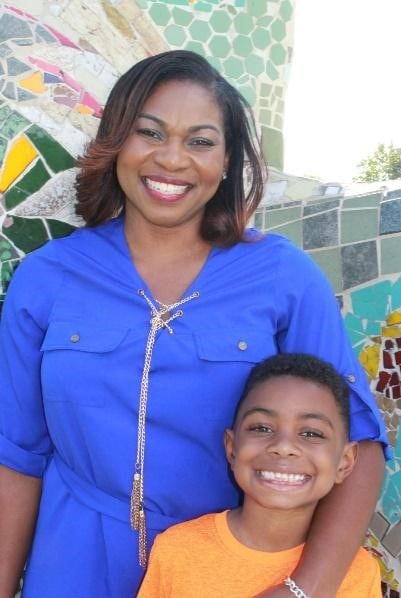World Sickle Cell Day
This World Sickle Cell Day (observed every year on June 19), find new stories and resources about sickle cell disease!
Sickle cell disease (SCD) is an inherited blood disorder that causes “sickle” shaped red blood cells that can stick together, blocking blood flow and oxygen from reaching all parts of the body. People with SCD can experience pain, anemia, infection, and other serious health problems (also known as complications) that may require care by a healthcare provider. When health problems, such as serious pain (also known as pain crises), cannot be managed at home or a visit to a healthcare provider is not possible, children and adults with SCD often require care in hospital emergency departments (ED) or clinics for treatment. In fact, the Sickle Cell Data Collection (SCDC) program (CDC’s current SCD monitoring project) found that, in California, people with SCD seek care in the ED an average of three times a year from their late teens to their late 50s.
Read personal stories from two women whose lives changed forever due to sickle cell disease.
Lametra Scott (and her son Rickey)

In September 2012, Lametra Scott gave birth to a baby boy. She named him Rickey. Before his birth, Lametra had no idea that she carried the sickle cell trait (SCT). It wasn’t until one of her prenatal visits that her doctor told her that she and her son’s father both had SCT, and that their son would have a 25% (or 1 in 4) chance of having sickle cell disease (SCD).
When Rickey was born, his primary care doctor tested him for SCD; Lametra was comforted to learn that he did not have the disease. Instead, she was told that he carried the trait for SCD just like his parents. She and her son’s father immediately breathed a sigh of relief. However, this comforting feeling did not last long.
Read the rest of Lametra’s story to find out why.
Aaron Washington

Having sickle cell disease nearly killed Aaron. She experienced one devastating medical complication after another. She had her first episode of pain, called a sickle cell crisis, at 8 months old and her first stroke at 8 years old. Her doctors told her she would not live to see her 13th birthday. Today at age 25, thanks to a successful bone marrow transplant, Aaron is defying all the odds.
Read her inspirational story.
Check Out the Latest Resources on Blood Donation

- Visit MySleevesUp.comexternal icon, a website created by REdHHoTT (Registry and Education for Hemovigilance in Hemoglobinopathy Transfusion Therapy), to find educational resources and tools about blood donation and transfusions in SCD and learn how you can help spread the word about blood donation in your community.
- Want to donate blood? Watch “The Importance of Blood Donation,” a short, educational video outlining the steps to donating blood and why your donation matters.
- Watch “Blood Donations Needed Among African Americans” and learn how blood donations can help save the lives of people with SCD. Share this video with family and friends on social media to spread awareness about the importance of minority blood donations.
- Read the Be the Motivation for Blood Donation pamphlet to learn more about minority blood donations and why they are important for people with SCD. Blood donations from people of similar racial backgrounds are more likely to match, leading to fewer health problems for the recipient.
- NEW! “Sickle Cell Disease: Give Blood, Save a Life” Podcast
This new CDC podcast highlights the importance of blood donations from African Americans to help people with sickle cell disease who might need one or more blood transfusions. Access the podcast here.
Use New Resource Toolkit to Spread Awareness About the Many Faces of Sickle Cell Disease
The materials and resources included in the “Sickle Cell Has Many Faces” resource toolkit seek to dispel the commonly held belief that sickle cell disease (SCD) affects individuals of only African descent. Although SCD is most common among African Americans in the United States, it can also affect Hispanics and people whose ancestors come from countries in South Asia (such as India), southern Europe (such as Greece and Italy), and the Middle East (such as Saudi Arabia and Lebanon). The resource toolkit contains sample messages and materials you can use to help increase public and provider awareness about the many faces of SCD. It includes
- Promotional announcements that you can include in a newsletter, publication, email, or webpage;
- Social media posts you can send from your organization’s (or personal) handle; and
- Links to the “Sickle Cell Has Many Faces” videos, key resources, and materials for you to share with others.
To request a FREE copy of the toolkit, please email Mandip Kaur at wvx6@cdc.gov. For more updates on new resources, information, and events, follow us on Twitter at @CDC_NCBDDD.
This public domain article was originally published on CDC.gov, you can read the original article here.










